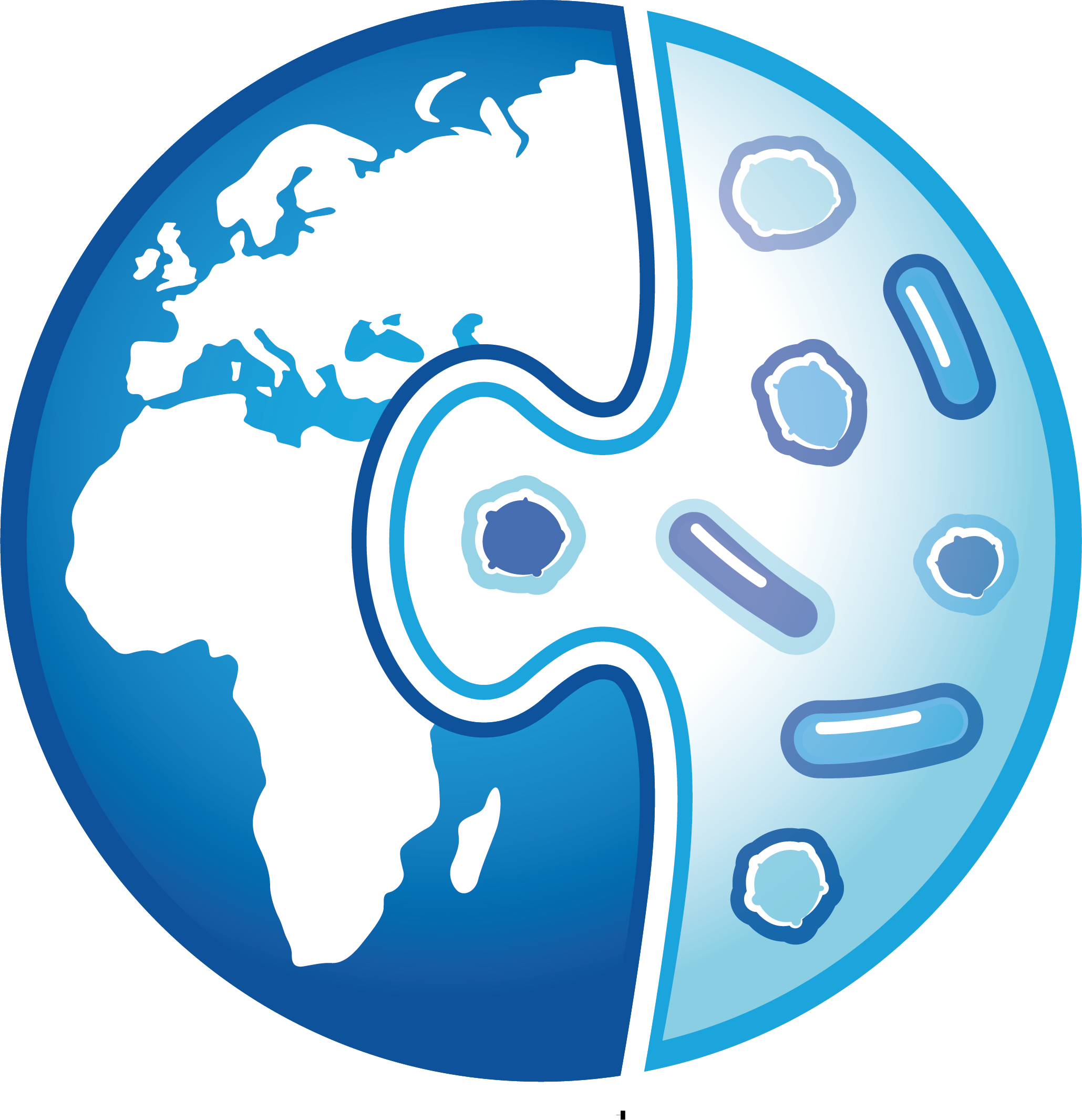The overall scientific goal of the Cluster of Excellence ‘Microbiomes Drive Planetary Health’ is an indepth understanding of the molecular, physiological, and ecological mechanisms that control microbiome composition and function across a broad array of highly relevant microbial ecosystems from the human gut to soils and the deep sea, which will link microbes to environmental and human health, i.e., to planetary health. To achieve this goal we have identified three thematic focus areas for the first phase of the CoE: Microbiome Interactions, Microbial Perturbations, and Microbial Interventions.
Research Theme 1: Microbiome Interactions
The key question in the first thematic area is: How is the composition and function of microbiomes shaped by interactions within and between microbiomes, between microbiomes and their hosts, between microbes and other organisms, and between microbiomes and their abiotic environment. CoE members have already made major contributions to answering this question, for example by developing computational methods to identify populations as fundamental units of interaction within complex communities using gene flow estimates derived from genomics, by defining interacting communities by time series analysis using mathematical techniques from the financial sector, or by developing individual-based computer models to investigate how spatial interactions among microbial decomposers drive community dynamics, which in turn shapes C and N cycling through the system.
Project 1: Interactions in Underexplored Ecosystems
- WP 1.1: The Small Intestine: an Underexplored Habitat with Implication for Human Health
- WP 1.2: The Influence of Invasive Species on Host-Associated Microbiomes
Project 2: Interdomain Interactions and Interaction Mechanisms
- WP 2.1: Cross-Kingdom Interactions in the Ectomycorrhizal Symbiosis
- WP 2.2: Control of Eukaryotic Microbial Populations by Viral Parasites
- WP 2.3: Probing Interkingdom Crosstalk during Inflammation
Research Theme 2: Microbiome Perturbations
The key question in the second thematic area is how microbiomes respond to environmental perturbations and how these responses feed back to the environmental processes that have caused them. While stochastic perturbations or variable environmental conditions are among the most important natural factors that shape the structure and functioning of microbiomes (and will thus be dealt with in the interaction theme), human activities have led to large-scale and often persistent disturbances, such as environmental pollution and climate change, which affect all microbiomes and affect human health and the health of the planet alike. Previous contributions of CoE members to answering the second key question include, for example, elucidating effects of recurrent drought on the soil microbiome and the establishment of high-throughput single-cell method pipelines, which enable an ultrafast direct read-out of perturbation-induced activity changes of microbiome members.
Project 3: Chemical Perturbations and Microbiome Functioning
- WP 3.1: Impact of Drugs on Microbiomes in Humans and Wastewater Treatment
- WP 3.2: Impact of Emerging Pollutants on Microbiomes across Systems
Project 4: Microbiome Responses to Climate and Land Use Change
- WP 4.1: Microbial Interactions under Climate Extremes
- WP 4.2: Perturbations of Permafrost Microbiomes and the Climate Feedback
- WP 4.3: Control of Nitrous Oxide Emissions in Soils
Research Theme 3: Microbiome Monitoring and Interventions
The key question in the third thematic area is whether we can predict the outcome of microbiome manipulations and can thus use microbiome interventions to mitigate or reverse human alterations of planetary health. This question is inextricably linked to and building on a thorough understanding of microbial interactions and perturbation and will thus become specifically important in the second phase of the CoE. In this first phase of the CoE, microbial intervention will be mainly based on available knowledge, to which members of the CoE have, in part, also contributed. For example, members of the CoE have discovered dominant, previously unrecognized phages, and revealed how defense systems against phages are structured within microbial populations in the wild. Such knowledge is a prerequisite for developing bacteriophages as bacterial control agents, an alternative to antibiotics.
Project 5: Microbiome Monitoring and Interventions for Human Health
- WP 5.1: Wastewater Microbiomes for Next-Gen Public Health Monitoring
- WP 5.2: Microbiome Modification by Fecal Microbiota Transplantation
- WP 5.3: Eavesdropping Interdomain Signals and Modulators
Project 6: Environmental Interventions
- WP 6.1: Microbiome-Based Improvement of Nitrogen and Phosphorus Nutrition in Crop Production
- WP 6.2: Microbiome-Enhanced Silicate Weathering
- WP 6.3: Role of Selective Sulfur Nutrients across Human and Environmental Microbiomes and for
Precision Microbiome Editing
Synthesis Module: Fundamental Principles, Synthesis and Modeling
The objective of the synthesis module of the CoE is to identify unifying principles of how microbiomes are structured and how they function in complex environments, from environmental to host-associated microbiomes. This objective will be approached by applying and modifying theory from general ecology or macroecology to complex microbiomes, and by exploring the complexity of microbiomes and their emerging properties and processes through mathematical modeling and other tools of complex systems science.
A further strength is that innovative techniques and method development are fully included in the CoE, enabling the research needs to drive method development. Additionally, this inclusion of methods and techniques facilitates the implementation of a data harmonization and management plan.
Project 7: Fundamental Principles of Microbiome Dynamics
- WP 7.1: Microbial Growth, Biomass, and Carbon Use Efficiency
- WP 7.2: Microbial Interaction Mechanisms and Networks in Complex Microbiomes
- WP 7.3: The Effect of Oscillating Environmental Conditions and Perturbations on Microbiomes
